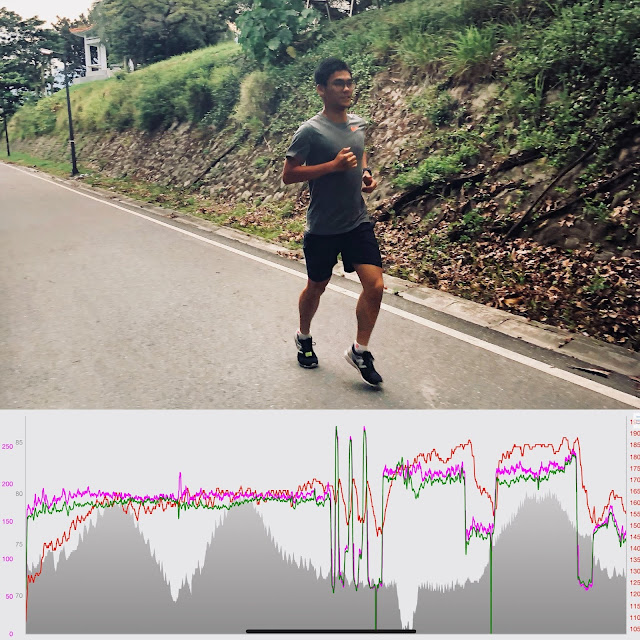關於FTP的定義
近日有讀者提出在《徹底看懂自行車功率數據》中,關於對FTP(功能性閾值功率)定義的問題,在書中的描述是:「自行中訓練中的FTP,是指在一小時內用盡全力且穩定的騎乘中所得到的最大平均功率。」有人甚至拿Dr. Andrew Coggan與Hunter Allen的《Training and Racing with a Power Meter》中的定義來作出批評,認為我的描述與這本書的說明不一樣。以下是《Training and Racing with a Power Meter》對FTP的定義:
FTP is the highest power that a rider can maintain in a quasi-steady state for approximately one hour without fatiguing.
FTP是指騎士維持在穩定輸出且不會疲勞的狀態下,維持約一小時的最高功率。
不過,我想說的是,FTP就只是一個在功率訓練中通用的實務工具,其實本來就沒有一個劃一的標準。而在我的著作中也並非要翻譯《Training and Racing with a Power Meter》這本書的定義。雖然FTP最先是由Dr. Andrew Coggan跟Hunter Allen提出,但經過不同教練就會有不同的詮釋方式,不過意義與目的基本上都是相同的,FTP主要就是要用來評估選手有沒有進步,以及用來設定訓練區間等。
在網路上就能找到很多不同教練 / 網站對FTP所下的定義,常用的測驗方式至少也有五種以上。以下是幾個在Google搜尋排名最高的幾個FTP定義:
FTP stands for Functional Threshold Power, which is commonly defined as the highest average power you can sustain for an hour, measured in watts. FTP is often used to determine training zones when using a power meter and to measure improvement.
FTP是“Functional Threshold Power”的縮寫,通常被定義為你可以維持一小時的最高平均功率,以瓦特為單位。FTP通常用來劃分訓練區間範圍,以為量化進步的幅度。
FTP is the average power that a rider can produce over the course of an hour.
FTP是騎士在一小時內所能輸出的最高平均功率。
Functional Threshold Power (FTP) represents your ability to sustain the highest possible power output over 45 to 60 minutes, depending on whether you’re a trained athlete or not. As a result 95% of the 20 minute average power is used to determine FTP.
FTP是用來表示你在45~60分鐘內所能維持的最高功率輸出的能力,取決於你的訓練程度。20分鐘最大平均功率的95%通常會被用來當作是FTP。
FTP is an abbreviation for “Functional Threshold Power” – simply put it is the power that a cyclist can sustain for 45 minutes to 1 hour. It is commonly accepted that riding as hard as possible for 20 minutes will provide a power reading equivalent to 95% of a rider’s FTP.
FTP是“Functional Threshold Power”的縮寫,簡單來說就是騎士可以維持45分鐘到1小時的功率。普遍認為20分鐘的最大努力騎行相當於其FTP的95%。
Threshold Power grows from FTP, a concept refined by power authority, Dr. Andy Coggan, is an estimation of the amount of work you are able to do in an hour...... Rather than asking athletes to attempt a one hour maximal effort to determineThreshold Power, I prescribe the method that Hunter Allen, co-author with Dr. Coggan of Training and Racing with a Power Meter, has developed. The protocol itself is actually quite simple: after a substantial warmup, start a lap on your head unit, and smash it for 20 minutes, as hard as you can. The average power recorded for the 20 minute test is multiplied by .95 to estimate what your “hour of power” (or Threshold Power) would be.
閾值功率從FTP增長,概念提出自功率訓練的權威Andy Coggan博士,是一個評估你能在一小時能做多少功的指標。文中亦建議採用20分鐘全力騎的平均功率乘以0.95,作為閾值功率的設定。
The term FTP stands for Functional Threshold Power and it’s a measure of the best average power output you could sustain for 1 hour in a time-trial scenario.
FTP是用來測量你在計時賽中能維持一小時的最佳平均功率輸出。
FTP is more a benchmark, a number to set your training zones and ensure you are pushing yourself as part of a structured training plan.
FTP更像是一個基準測試,這個數字可以用來設定你的訓練區間,並能確保自己能成為訓練計畫的一部分(更個人化)。作者提供三種測驗方式:60分鐘、20分鐘與8分鐘,有興趣可以看內文。
以上只是一小部分,但足以證明不同教練本來就會對FTP有不同的認知與詮釋方式,而且在描述上跟《Training and Racing with a Power Meter》這本書也都不盡相同,但意義跟目的其實都是一樣的。難道只要跟Dr. Andrew Coggan跟Hunter Allen的定義不同就是不合格的教練?就都不能談功率訓練?
當然,我並不是要否定《Training and Racing with a Power Meter》的定義,只是想要強調一件事:FTP是一個在功率訓練中通用的實務工具,本來就沒有一個劃一的標準。《Training and Racing with a Power Meter》的定義不等於全世界教練的定義
另外,FTP測驗方式同樣沒有統一標準,其中以20分鐘全力騎乘以0.95最為普遍,幾乎80%以上的教練都會採用或建議這種測驗,原因無他:簡單、可執行性高。而遇到不同程度、類型、或不同專項的選手,就應該要採用不同的測驗方式。至於結果是不是真的等同於一小時最大功率,我倒是覺得沒有那麼重要(我們又不是要做研究寫論文...),只要每次測驗都採用相同方式,在類似環境與器材上進行,那麼測驗結果都可以用來當作其中一種運動表現的依據。只要能抓到老鼠,無論黑貓白貓都是好貓啊!
其中TrainingPeaks在功率認證課程中(TrainingPeaks Power Certification),也提供好幾種普遍且常用的測驗方式,例如40公里計時測驗、一直提到的20分鐘最大功率乘以0.95等。總之,無論是FTP定義與測驗方式,都沒有真正最好或統一的標準;只要能有效達成目的,就是最適合的方式。
 |
| TrainingPeaks提供的40公里計時測驗的流程,另外還有5秒、1分鐘與5分鐘的測驗。 |
順帶一提,目前我所訓練的長距離鐵人三項選手,我會偏好安排30分鐘全力騎乘以0.95~0.98(視情況而定),作為FTP的設定,理由是測驗時間更長,其結果會更符合一小時的最高平均功率。
最後提供三篇TrainingPeaks部落格中關於FTP測驗的文章,日後有機會再翻譯出來給大家參考:








留言
張貼留言